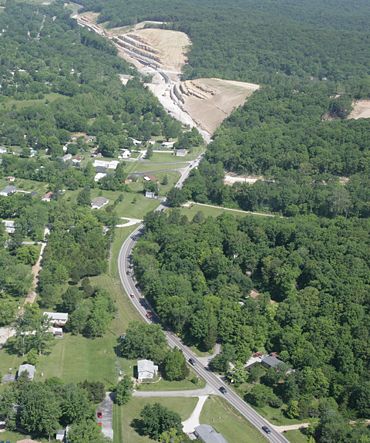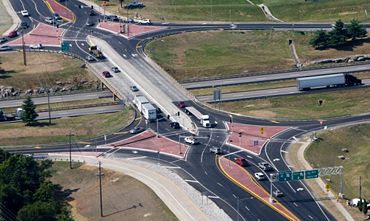Difference between revisions of "Category:200 GEOMETRICS"
(add new article, Preliminary Plans) |
m (New EPG 242) |
||
| (26 intermediate revisions by 2 users not shown) | |||
| Line 1: | Line 1: | ||
| − | [[image:200 Geometrics.jpg|right| | + | [[image:200 Geometrics.jpg|right|370px]] |
| + | [[image:200 DDI.jpg|right|370px]] | ||
| + | [[image:200 design.jpg|right|370px]] | ||
| + | |||
| + | <categorytree mode=all>201 Clearing and Grubbing</categorytree> | ||
| + | <categorytree mode=all>202 Removal of Buildings and Structures</categorytree> | ||
| + | <categorytree mode=all>203 Roadway and Drainage Excavation, Embankment and Compaction</categorytree> | ||
| + | <categorytree mode=all>204 Embankment Monitoring</categorytree> | ||
| + | <categorytree mode=all>205 Modified Subgrade</categorytree> | ||
| + | <categorytree mode=all>206 Excavation for Structures</categorytree> | ||
| + | <categorytree mode=all>207 Linear Grading</categorytree> | ||
| + | <categorytree mode=all>208 Interception Ditch</categorytree> | ||
| + | <categorytree mode=all>209 Subgrade Preparation</categorytree> | ||
| + | <categorytree mode=all>210 Subgrade Compaction</categorytree> | ||
| + | <categorytree mode=all>211 Subgrade Scarifying</categorytree> | ||
| + | <categorytree mode=all>212 Subgrading and Shouldering</categorytree> | ||
<categorytree mode=all>214 Rock Fill</categorytree> | <categorytree mode=all>214 Rock Fill</categorytree> | ||
| + | <categorytree mode=all>215 Shaping Slopes</categorytree> | ||
| + | <categorytree mode=all>216 Removals for Bridge Structures</categorytree> | ||
<categorytree mode=all>230 Alignment of the Roadway</categorytree> | <categorytree mode=all>230 Alignment of the Roadway</categorytree> | ||
<categorytree mode=all>231 Typical Section Elements for Roadways</categorytree> | <categorytree mode=all>231 Typical Section Elements for Roadways</categorytree> | ||
| Line 11: | Line 28: | ||
<categorytree mode=all>237 Contract Plans</categorytree> | <categorytree mode=all>237 Contract Plans</categorytree> | ||
<categorytree mode=all>238 Surveying Activities</categorytree> | <categorytree mode=all>238 Surveying Activities</categorytree> | ||
| + | <categorytree mode=all>239 Construction Inspection Guidelines for Final Plans</categorytree> | ||
| + | <categorytree mode=all>240 Maintenance and Emergency Crossovers</categorytree> | ||
| + | <categorytree mode=all>241 Aesthetic Considerations</categorytree> | ||
| + | <categorytree mode=all>242 Optional and Alternate Pavement Designs</categorytree> | ||
| + | |||
| + | {|style="padding: 0.3em; margin-left:2px; border:2px solid #a9a9a9; text-align:center; font-size: 95%; background:#f5f5f5" width="790px" align="center" | ||
| + | |- | ||
| + | |EPG articles are not referenced as "sections" but as EPG XXX.X or "articles" to avoid confusion with MoDOT specs (which are contractually binding). | ||
| + | |} | ||
| + | |||
| + | ==200.1 Construction Inspection Guidance for Grading and Removals== | ||
| + | |||
| + | '''General Preparation and Requirements''' | ||
| + | |||
| + | This guidance will not only serve to help personnel assigned to grading and removals but, after reviewing the multitude of their duties and responsibilities, will emphasize the importance of their contribution to the quality of the finished product. This information is intended as a guide to uniform administration, inspection and testing procedures on grading and removal work. | ||
| + | |||
| + | '''Inspector Preparation''' | ||
| + | |||
| + | It is essential that the inspector have a thorough knowledge of the standard specifications, special provisions and plans. The inspector should study all information available to them regarding the various types of soil. The inspector must be able to relate each soil type to the standards as it is being placed in the embankment. | ||
| + | |||
| + | '''Daily Documentation''' | ||
| + | |||
| + | The compaction inspector must keep a diary. The inspector should record weather conditions, condition of material being moved, all activities of the contractor forces, an estimate of quantities completed, any special instructions given the contractor and any other information about the earthwork phase of the work each day. The person making the diary entries must sign them. | ||
| + | |||
| + | '''Traffic Control Plan''' | ||
| + | |||
| + | Enforcement of specific safety measures includes requiring all work be properly barricaded and/or signed in accordance with the Traffic Control Plan included in the contract. The plan requires that [[903.5 Regulatory Signs|signs]] be kept clean, legible, in alignment and in good repair. | ||
Latest revision as of 12:33, 18 December 2020
| EPG articles are not referenced as "sections" but as EPG XXX.X or "articles" to avoid confusion with MoDOT specs (which are contractually binding). |
200.1 Construction Inspection Guidance for Grading and Removals
General Preparation and Requirements
This guidance will not only serve to help personnel assigned to grading and removals but, after reviewing the multitude of their duties and responsibilities, will emphasize the importance of their contribution to the quality of the finished product. This information is intended as a guide to uniform administration, inspection and testing procedures on grading and removal work.
Inspector Preparation
It is essential that the inspector have a thorough knowledge of the standard specifications, special provisions and plans. The inspector should study all information available to them regarding the various types of soil. The inspector must be able to relate each soil type to the standards as it is being placed in the embankment.
Daily Documentation
The compaction inspector must keep a diary. The inspector should record weather conditions, condition of material being moved, all activities of the contractor forces, an estimate of quantities completed, any special instructions given the contractor and any other information about the earthwork phase of the work each day. The person making the diary entries must sign them.
Traffic Control Plan
Enforcement of specific safety measures includes requiring all work be properly barricaded and/or signed in accordance with the Traffic Control Plan included in the contract. The plan requires that signs be kept clean, legible, in alignment and in good repair.


